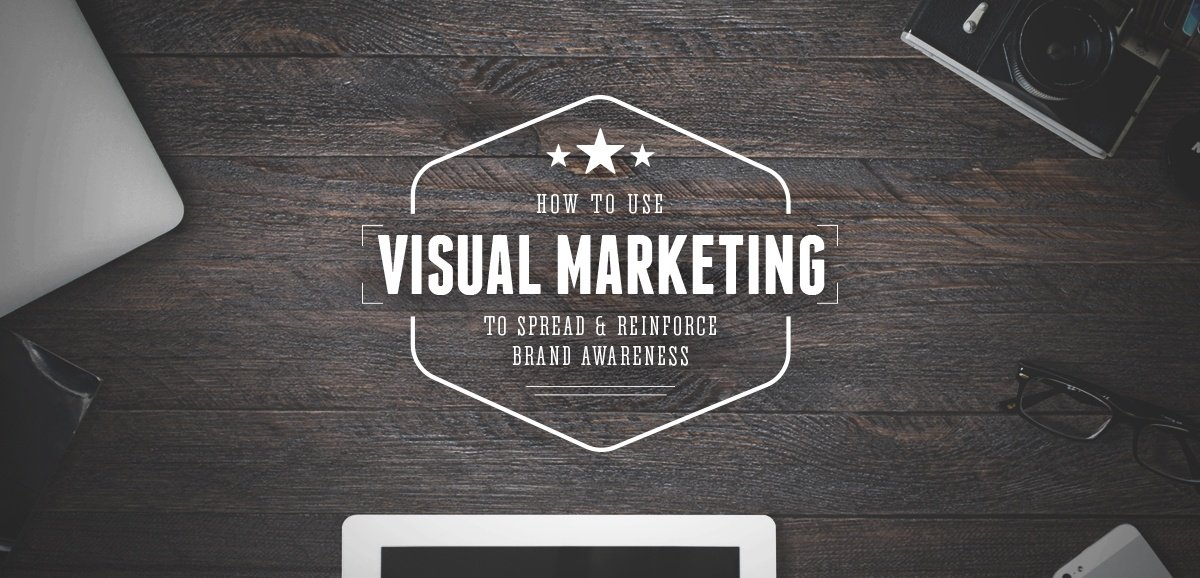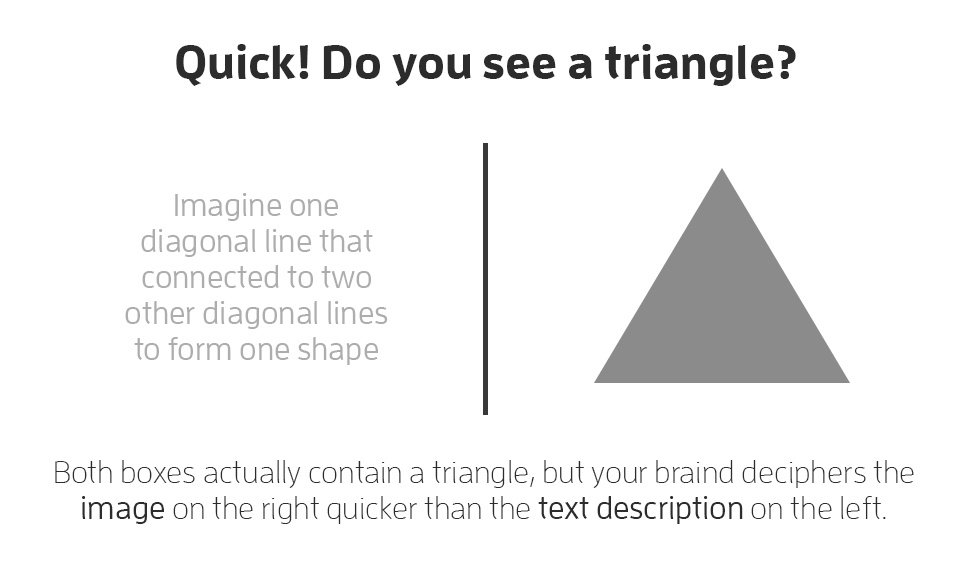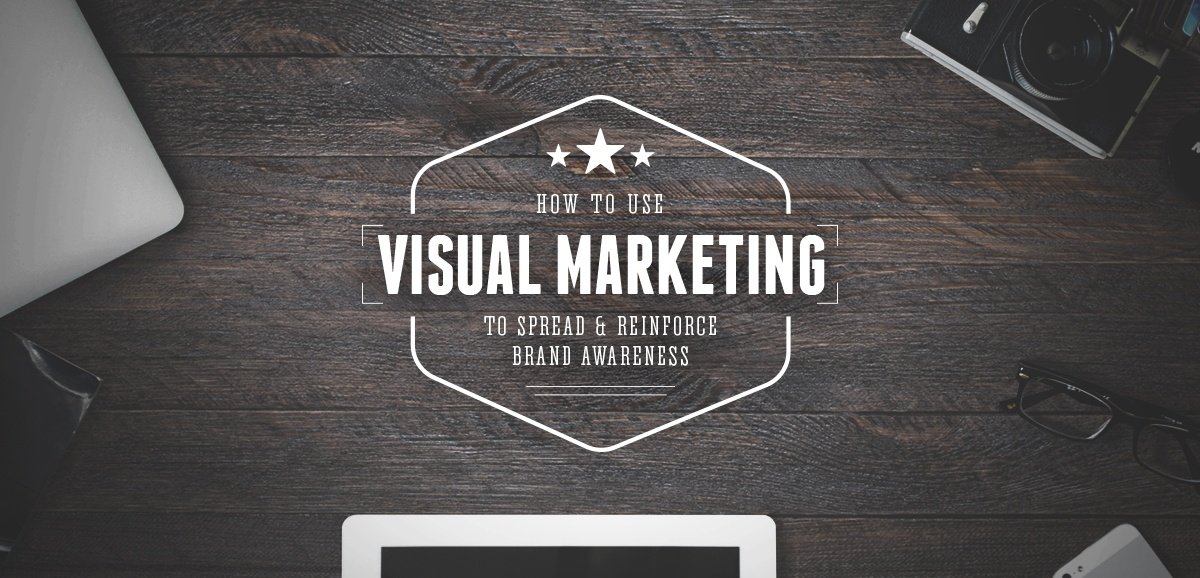
From print materials and digital media to physical products and artwork on the walls, visuals are a major element in businesses of all shapes and sizes.
Images, graphics, and colors make customers feel a certain way, remember a particular message, and form opinions about a brand. Knowing how to use these visuals can benefit businesses as they control brand perception, spread brand awareness, and leave lasting impressions on customers.
So if your business isn’t leveraging visual marketing — it’s time to get started.
What Is Visual Marketing?
Visual marketing is the strategy of using visual aids to tell a story, communicate a message, and reinforce branding.
The elements of visual marketing appear online and offline and include:
- Logos
- Signage
- Print advertising
- Infographics
- Charts and graphs
- Photos
- Videos
- Icons
- Slideshows
- Interactive games
- Packaging
- Swag
- And more
Many of these visuals are fundamental parts of business so many companies see them as basic essentials — not opportunities. But that’s because they don’t realize how important the style, appearance, and existence of visuals can be to a business.
Why Is Visual Marketing Important?
You can say a lot with words — but you can say even more with a clear, graphical representation of an idea, feeling, or function.
The best way to explain visual marketing is, not surprisingly, to give a visual example.
If you were told to imagine one diagonal line that connected to two other diagonal lines to form one shape, it would take you a lot longer to imagine a triangle, than if you were just shown this image. It takes you longer to imagine a triangle with a text description because our brains process visuals faster than words — 60,000 times faster (Boston.com).
It takes you longer to imagine a triangle with a text description because our brains process visuals faster than words — 60,000 times faster (Boston.com).
We absorb and understand graphics quickly and remember their meanings more efficiently. While people only remember 20% of what they read, they remember 80% of what they see (Huffington Post).
Because people quickly absorb, interpret, and remember visuals, it’s no surprise that most of us respond well when presented with the opportunity to see and share them.
- Infographics are liked and shared 3x more than other content. (Entrepreneur)
- Instagram’s has 400 million active users who post 70 million photos per day. (Adweek)
- 350 photos are uploaded daily to Facebook. (Adweek)
- Tweets with images receive 18% more clicks, 89% more favorites, and 150% more retweets. (Business2Community)
- Shoppers who view videos are 1.81x more likely to purchase than non-viewers. (Invodo)
- 71% of consumers say that video is the best way to bring a product’s features to life. (Invodo)
Visuals encourage people to act, share, and purchase which is why they can play a significant role in marketing strategies.
How to Start Using Visual Marketing
A visual marketing strategy begins with a logo, as it is the most basic component of a brand’s visual identity.
But remember — visual marketing isn’t plastering your logo on everything. It’s using your logo to create brand guidelines that direct the creation of other visuals that represent the feel and appeal of your unique brand.
Define your branding elements. Create a branding style guide that leads the direction of your other visuals based on your logo. The guide should include guidelines for:
- Color Schemes
- Fonts
- Icon Styles (flat, 3D, photorealistic, hand-drawn, etc.)
- Logo Formats (square version, horizontal version, text-free version, etc.)
- Imagery (include examples of images that match your brand)
- Voice
Define your voice. While defining a “voice” for visuals might sound counterintuitive, it is actually an essential part of identifying your visual brand. A brand “voice” is more than the way your brand sounds or the words you use, it the expression you use to engage and motivate your audience.
Your brand expression will translate through the images and visuals you use. So in your branding guide, include descriptions and words of what feelings and emotions define the vibe and values of your brand.
Make sure your brand is always represented. While your logo does not need to be on every piece of visual material, your brand does need to be represented so that customers and clients can associate your brand with the image.
All of your visuals should have a least one element that ties back to your brand. Whether it is a beautiful photo with an overlay of your branded font and designated hashtag or a logo on the corner of your free Slideshare presentation, the brand connection is what makes it marketing. Don’t forget to tie your visual back to your brand.
Use visual marketing on your website and social media channels. Once you have a clear direction on the voice and imagery associated with your brand, start using visual marketing on your online platforms.
- Create branded images for each of your blog posts so that your articles will stand out on social networks. The image may include the title or a quote from the posts
- Embed videos on your webpages. Videos are the perfect way to show a product in action, introduce your staff, or show off your business location.
- Create Pinterest boards. Use images that represent the lifestyle of your ideal customer, not just promotional and products pictures.
- Publish infographics that share complicated data or information about your brand or industry.
- Create interactive quizzes that entertain your audience (and collect valuable data for you).
- Published slideshows on Slideshare that educate your customers on topics related to your industry.
- Avoid stock photos and use custom and unique photography as much as possible.
Use visual marketing in your store. Bring elements of your visual marketing into the physical parts of your business.
- Set up a photo-opp in your store that encourage visitors to take photos and share them on social media.
- Use signage to display digital media in your store. Use screens to share product demos, testimonials, and information about your brand, products, or services.
- Add interesting visual elements to areas where customers wait. Add signage near check-out lines, sitting areas, and changing rooms.
- Use digital menu boards to share images of food items from your menu.
- Put your stamp on everything that comes out of your store. Use unique visuals on packages, bags, boxes, wrapping paper, and whatever else leaves your store with your customer.
The opportunities and possibilities of visual marketing are plentiful, varied, and powerful. Once you begin creating visuals that accurately share your brand story and clearly articulate your messages, your business will begin to build stronger relationships with customer and clients, both new and old.
